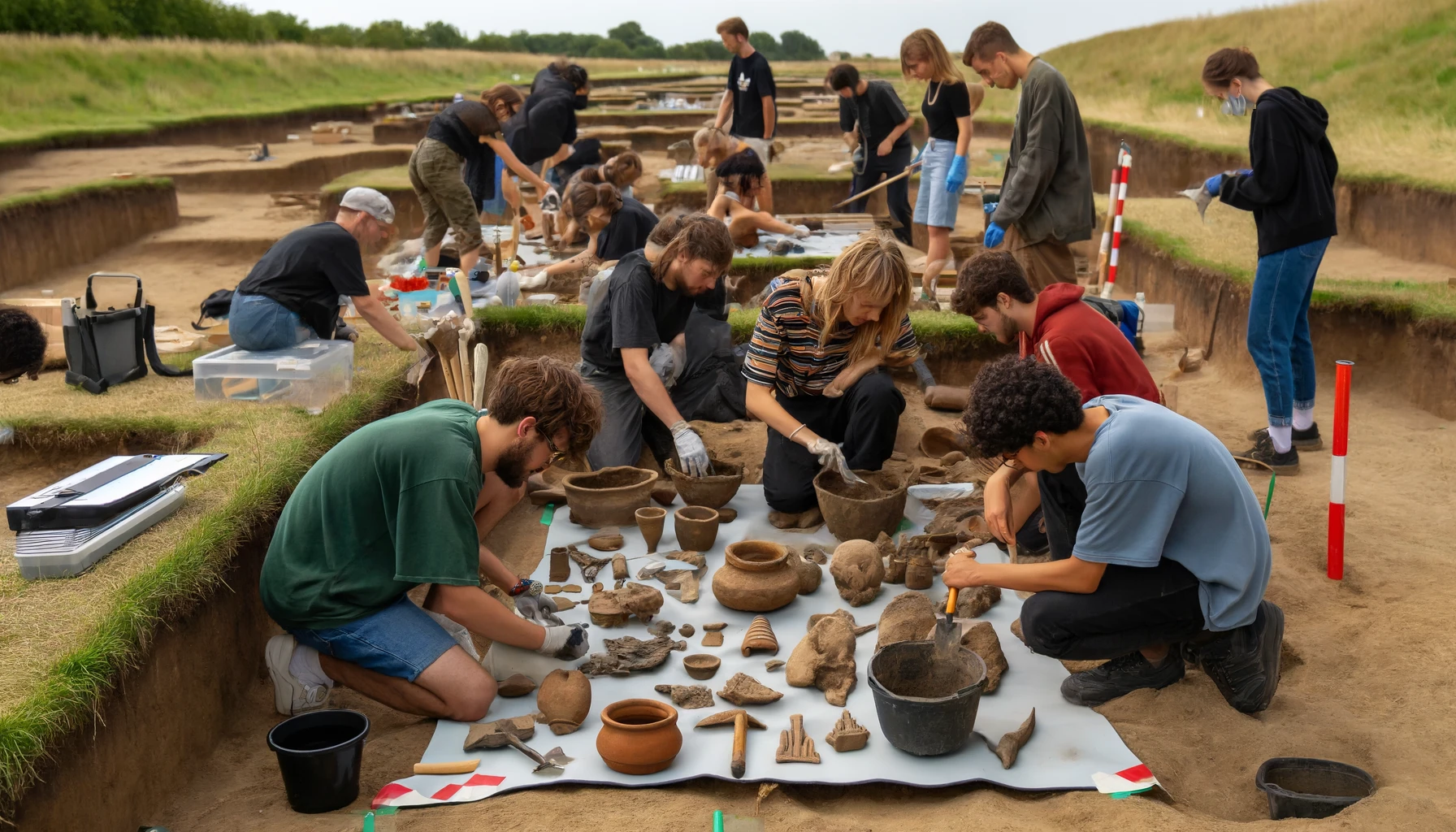Last June, a group of amateur archaeologists made an intriguing discovery while digging through an ancient Roman pit in eastern England. Amidst the typical finds of tiles, animal teeth, and pottery, they unearthed something that stood out—a bronze object, hollow and roughly the size of a clenched fist, with a unique twelve-sided shape known as a dodecahedron.
Richard Parker, a member of the Norton Disney village’s archaeology society, recognized it immediately. “You’re looking at a very strange and bizarre object,” he remarked during an interview. This object, a Roman dodecahedron, is believed to have been placed there about 1,700 years ago.
The dodecahedron is no ordinary artifact. With its pentagon-shaped faces, each featuring a different-sized hole, and each of its 20 corners adorned with a semi-spherical knob, it resembles something from a sci-fi tale rather than an ancient relic. Despite being discovered in various parts of Northern and Western Europe since 1739, with around 130 examples known, these objects have long puzzled historians and archaeologists.
The mystery deepens as there is no written description or pictorial reference of these objects in any ancient texts. Lorena Hitchens, an archaeologist specializing in these artifacts, shared her fascination: “It’s hard to believe that we have anything from the Roman period that we don’t know what it’s for. It’s very tempting to want to solve that mystery.”
Despite extensive study, the dodecahedron’s purpose remains an enigma. The British Museum’s Portable Antiquities Scheme summarizes the current understanding: “The function of these enigmatic forms is still unclear and no firm conclusions have been reached.” However, the form, condition, and discovery locations of these objects provide clues that help narrow down potential theories.
One insight comes from the varied sizes of discovered dodecahedrons, ranging from two to over four inches, suggesting they were not used as standard measuring tools. “You need consistency to be able to use anything as a gauge,” explained Hitchens.

Moreover, the geographical distribution of these artifacts, found across the northern and western provinces of the Roman Empire but absent from the Mediterranean regions, suggests they were not primarily military objects. This leads some to speculate about other possible uses, including as tools.
The internet has also joined in on the speculation, with theories ranging from knitting tools to surveying instruments. Amy Gaines, a pattern designer, even demonstrated a theory using a 3D-printed replica that suggests they might have been used to knit gold chains. Meanwhile, other theories propose they could function as candle holders, dice, or even dog treat dispensers.
Despite the variety of theories, Hitchens cautions against assuming these were practical everyday tools. “They’re also much more delicate than people realize,” she added, noting that they would break easily if used as tools.
The prevailing theory among scholars is that dodecahedrons had a religious or ritual significance, especially considering the intricate design and technical skill required to create one using the lost-wax casting process. The fact that the Norton Disney relic was found buried at a site where a figurine of a deity was discovered decades earlier supports the notion of a religious element.
Although definitive answers are still out of reach, the discovery continues to captivate and puzzle both the academic community and the public. The dodecahedron will soon be displayed at the nearby Lincoln Museum, where it may catch the eye of someone who can provide new insights into its mysterious purpose.
Reflecting on the broader implications of such discoveries, Gaines pondered the future: “I wonder in 2,000 years what an archaeologist will think when she discovers some of the tools or the junk we throw away without the instruction manual.”
This article is based on the following article:
https://www.washingtonpost.com/world/2024/04/30/roman-relic-norton-disney-dodecahedron-theories

Background Information
By providing themselves with this contextual information, readers can better appreciate the complexities of Roman history and the process of archaeological discovery. This foundation not only enriches their understanding of the specific article about the Roman dodecahedron but also enhances their overall grasp of history and science.
Understanding the Roman Empire
Time Period and Geography
- The Roman Empire was one of the largest empires in ancient history, stretching from the British Isles across Europe to North Africa and the Middle East.
- It lasted from 27 BC, when Augustus became the first emperor, until the fall of the Western Roman Empire in AD 476. The Eastern Roman Empire, or Byzantine Empire, continued until 1453.
Culture and Society
- Roman society was highly structured with a complex system of citizenship, law, and rights that influenced many aspects of daily life and governance.
- The Romans are known for their innovations in engineering, architecture, and law, many of which are foundational to modern Western culture.
Military
- The Roman military was instrumental in the empire’s expansion and maintenance. It was highly organized, disciplined, and employed advanced tactics and technology for the time.
Introduction to Archaeology
What is Archaeology?
- Archaeology is the study of human history and prehistory through the excavation of sites and the analysis of artifacts and other physical remains.
- It helps us understand cultures that existed before written records, providing insights into daily life, societal structure, and human interaction.
Methods and Techniques
- Excavation: Carefully digging up historical sites to find artifacts.
- Dating Techniques: Methods like radiocarbon dating and thermoluminescence to determine the age of findings.
- Analysis: Examining artifacts to uncover their use, significance, and relation to historical events.
Challenges and Debates
- Interpretation: Often, archaeologists have to piece together incomplete data, leading to debates and revisions of historical understanding.
- Preservation: Ensuring artifacts and sites are preserved for future study and education.
Relevance of Archaeological Discoveries
Cultural Insights
- Artifacts like the Roman dodecahedron offer a tangible connection to the past, showing the technological and artistic capabilities of ancient civilizations.
Historical Context
- Understanding where an artifact was found and its context within the site can provide critical insights into its use and significance.
Unsolved Mysteries
- Not all discoveries have clear explanations. Some, like the dodecahedron, remain subjects of speculation and study, which can stimulate interest and further research in archaeology.
Please subscribe to Insight Fortnight, our biweekly newsletter!

Hello from San Francisco, re: Roman dodecahedra-
How about a lantern/projector? Not a candle holder, but a housing. Lit candle anchored on ground, poking up through hole in bottom, with
light from wick (in middle of object) projecting outwards. Works for me. -Georgette Freeman
PS: I get the same effect from a hollow hexagonal recycled railway switch lamp housing, using an LED flashlight set inside the housing, on a broad, wide-cast light setting.
Very moody.